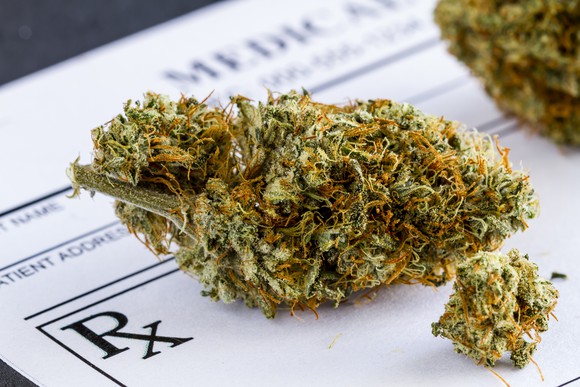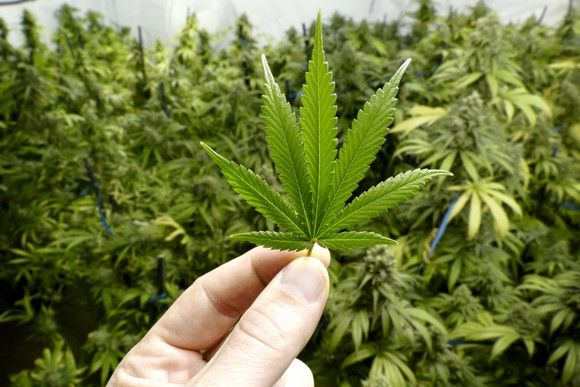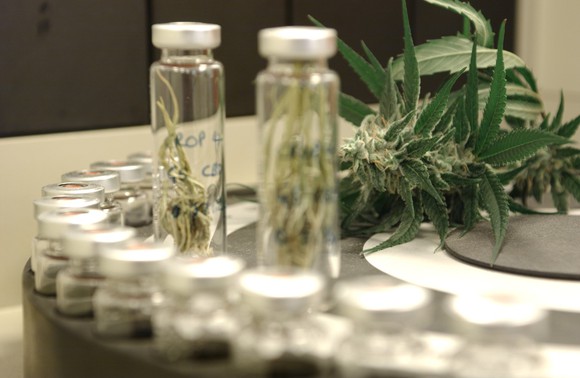Few if any industries are growing at a quicker and more consistent pace in the U.S. than marijuana. A report released earlier this year by Marijuana Business Daily entitled “Marijuana Business Factbook 2017” found that the U.S. legal-weed market is expected to grow by 45% in 2018, and an aggregate of 300% between 2016 and 2021. If these projections are accurate, we could be talking about a $17 billion market by 2021. With growth like this, it’s no wonder why marijuana stocks have gone through the roof in recent years.
But at the same time, the federal government has hardly adjusted its stance on marijuana. The drug remains a Schedule I substance at the federal level, meaning it has no recognized medical benefits, and is deemed to be completely illegal, right alongside LSD and heroin.

Marijuana companies also find no solace come tax time. U.S. tax code 280E disallows businesses that sell federally illegal substances from taking corporate income-tax deductions. The end result is that they’re forced to pay tax on their gross profits instead of net profits, assuming they’re even profitable in the first place.
The federal government broke its medical-marijuana promise
If there’s been one small victory for pro-legalization enthusiasts at the federal level, it was the announcement from the Obama administration in 2016 that it’d be removing some of the red tape that keeps researchers from examining the medical benefits and risks of cannabis. In particular, the new policy on medical-cannabis research was designed to allow other universities, aside from the University of Mississippi, which has been the only authorized cannabis grower for the federal government since 1968, to grow medical cannabis. Ending the University of Mississippi’s monopoly and introducing new supply was expected to be a boon to the research industry.
Or so everyone thought.
Attorney General Jeff Sessions, head of the Justice Department, and the U.S. Drug Enforcement Agency (DEA), have been butting heads for months over requests to expand medical-marijuana research (and supply in the process). Despite 25 proposals to grow medical cannabis on contract with the federal government, and a bipartisan letter requesting Sessions consider these proposals, the Justice Department has dug in its heels and thus far maintained a monopoly for the University of Mississippi.
And that’s still not all.
As Forbes reports, the DEA has requested researchers grow 443,680 grams in 2018, or a tad over 978 pounds of cannabis, to conduct their research. This works out to a modest decline from the amount of cannabis produced for medical research in 2017. That’s right, folks: Despite the federal government’s announcement of an expansion of its medical-marijuana research program in 2016, it’s broken that promise.
Even if Sessions doesn’t agree with marijuana’s expansion, which he’s made very clear through his speeches and actions, it’s a complete head-scratcher that the federal government has stood pat on medical-cannabis research when a handful of clinical-stage drug developers have showed positive clinical benefits.
For example, GW Pharmaceuticals (NASDAQ:GWPH) reported very encouraging data from its cannabidiol-based lead drug Epidiolex as a treatment for two rare types of childhood-onset epilepsy. Cannabidiol is the non-psychoactive component of cannabis. In two studies each for Dravet syndrome and Lennox-Gastaut syndrome, GW Pharmaceuticals’ lead drug wound up significantly reducing the frequency of seizures in patients relative to the placebo. In fact, the reduction was three times greater in Dravet syndrome (39% to 13%) compared with the baseline.
Insys Therapeutics (NASDAQ:INSY), an embattled drug developer that has two approved drugs on the market, has shown similarly positive results. One of those drugs, which was recently launched, is Syndros, an oral dronabinol solution designed to treat chemotherapy-induced nausea and vomiting, as well as anorexia associated with AIDS. This drug is essentially a synthetic form of tetrahydrocannabinol, the psychoactive component of cannabis known in shorthand as “THC.”
While medical-cannabis trials haven’t all been successful — GW Pharmaceuticals’ cancer pain studies involving Sativex in the U.S. failed miserably — I would surmise they’ve delivered enough in the way of encouraging results to merit increased federal research.
Perhaps the bigger issue is that without this clearly defined benefit-versus-risk analysis from researchers, there’s virtually no chance Congress will reschedule marijuana. As long as the red tape remains in place, researchers simply won’t have the means to conduct the research needed to sway lawmakers. That’s an ongoing concern for a burgeoning industry that’s still illegal at the federal level.
credit:420intel.com














